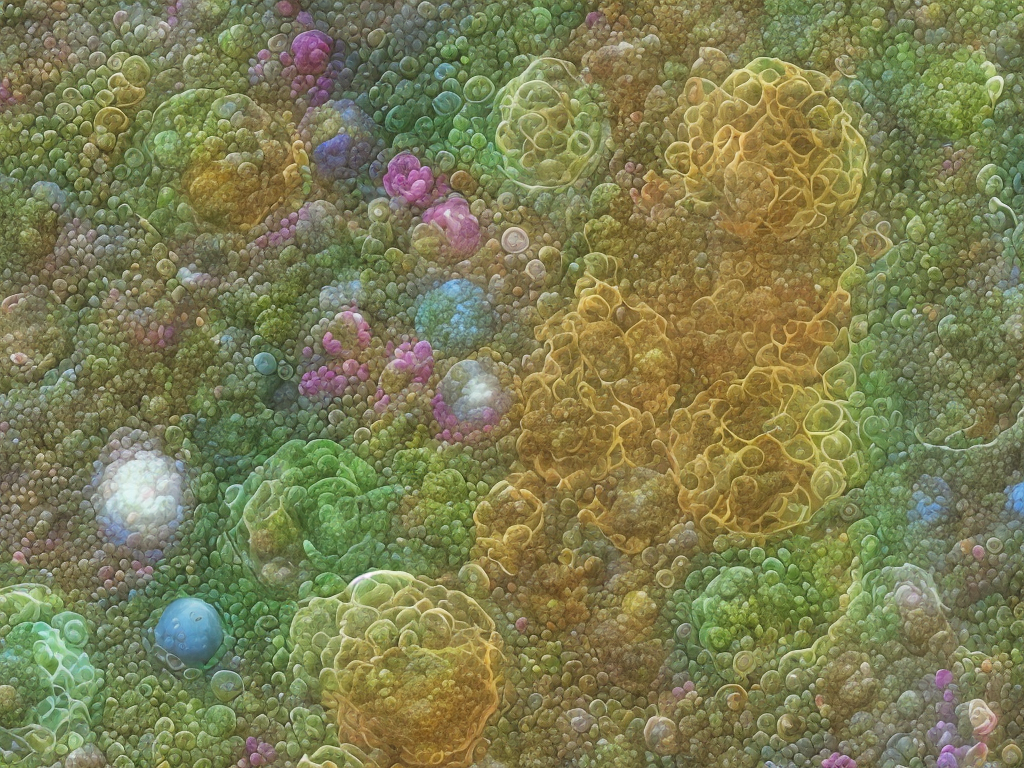
The difference between prokaryotes and eukaryotes is a topic that has been studied and researched for many years. Prokaryotes are unicellular organisms that lack a nucleus and other membrane-bound organelles. Eukaryotes, on the other hand, are multicellular organisms that have a nucleus and other membrane-bound organelles. In this article, we will discuss the differences between these two types of organisms.
Table 1: Differences between Prokaryotes and Eukaryotes
| Prokaryotes | Eukaryotes |
| --- | --- |
| Unicellular | Multicellular |
| Lack a nucleus | Have a nucleus |
| Lack membrane-bound organelles | Have membrane-bound organelles |
| Cell wall made of peptidoglycan | Cell wall made of cellulose |
| Binary fission | Mitosis |
| Do not undergo meiosis | Undergo meiosis |
| Ribosomes are smaller | Ribosomes are larger |
The first major difference between prokaryotes and eukaryotes is their cell structure. Prokaryotic cells are much simpler in terms of their structure than eukaryotic cells. Prokaryotic cells do not have a nucleus, which means that their DNA is not enclosed in a membrane. Eukaryotic cells, on the other hand, have a nucleus that encases their DNA in a membrane. This difference in the structure of the cells has a significant impact on the way they function.
The second major difference between prokaryotes and eukaryotes is the presence or absence of membrane-bound organelles. Prokaryotic cells do not have membrane-bound organelles, whereas eukaryotic cells have a range of organelles such as mitochondria, Golgi apparatus, endoplasmic reticulum, and lysosomes. These organelles have specific functions such as energy production, protein synthesis, and waste disposal.
The third major difference between prokaryotes and eukaryotes is their cell wall composition. Prokaryotes have a cell wall made of peptidoglycan, which is a complex molecule composed of sugars and amino acids. Eukaryotic cells, however, have a cell wall made of cellulose, which is a compound found in plants.
The fourth major difference between prokaryotes and eukaryotes lies in their mode of reproduction. Prokaryotic cells undergo binary fission, a process in which a single cell splits into two identical cells. Eukaryotic cells, on the other hand, undergo mitosis, a process that involves the division of a single cell into two identical daughter cells. Additionally, eukaryotic cells undergo meiosis, a process of cell division that leads to the production of gametes.
The final major difference between prokaryotes and eukaryotes is the size of their ribosomes. Ribosomes are responsible for protein synthesis in cells. Prokaryotic ribosomes are smaller than eukaryotic ribosomes, which means that the two types of cells use different approaches to synthesize proteins.
In conclusion, prokaryotes and eukaryotes are two vastly different types of organisms. Prokaryotes are unicellular organisms that lack a nucleus and other membrane-bound organelles. Eukaryotes, on the other hand, are multicellular organisms that have a nucleus and other membrane-bound organelles. The differences between these two types of organisms can be attributed to the differences in their cell structure, the presence or absence of membrane-bound organelles, their cell wall composition, mode of reproduction, and the size of their ribosomes. Understanding these differences is crucial for scientists who study organisms and their behavior in different environments.
 Self-Instruct
Self-Instruct